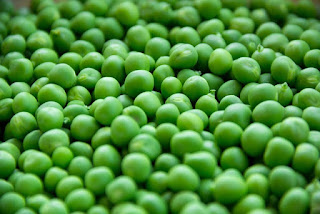Zucchini, also known as courgette in some parts of the world, is a summer squash that belongs to the species Cucurbita pepo. It can be dark or light green in color and has a similar shape to a ridged cucumber.
Here are some interesting aspects of zucchini:
Origin and History: Zucchini originated in Central and South America and was brought to Europe in the early colonial times. Despite being a quintessentially Italian ingredient now, it was not widely cultivated in Italy until the 19th century.
Nutritional Value: Zucchini is low in calories but high in essential nutrients like potassium, manganese, and antioxidants such as vitamin C and vitamin A. It's also a good source of dietary fiber, which is beneficial for digestive health.
Culinary Uses: Zucchini is extremely versatile in the kitchen. It can be eaten raw, sliced in salads, or used in sandwiches. It's also commonly grilled, sautéed, stuffed, baked, or incorporated into soups, stews, and casseroles. Zucchini noodles, or "zoodles," have become popular as a low-carb alternative to pasta.
Health Benefits: Due to its high water content and low calorie count, zucchini is a great vegetable for weight loss diets. Its fiber content is helpful for promoting healthy digestion, and the skin of the zucchini is particularly high in antioxidants.
Growing Season: Zucchini plants are quite prolific and are known for their high yield. They are typically easy to grow in warm, fertile soil during the summer months.
Flowers: Like yellow squash, the flowers of the zucchini plant are also edible and considered a delicacy. They can be stuffed, battered and fried, or used as a colorful addition to salads.
Size and Harvesting: While zucchinis can grow to a very large size, they are typically harvested when they are about 6 to 10 inches long. Smaller zucchinis are more tender and flavorful.
Cultural Impact: In Italian cuisine, zucchini is used in a variety of dishes, from appetizers to main courses. The vegetable has gained global popularity and is used in various cuisines worldwide.
Zucchini in Baking: It's also a popular ingredient in baking and can be found in recipes for breads, muffins, and cakes. Grated zucchini adds moisture and a mild flavor to baked goods.
Zucchini's versatility, ease of cultivation, and nutritional profile make it a popular and healthy choice for many gardens and kitchens.
Zucchini, while a common vegetable, has its share of unusual and intriguing facts:
Record-Breaking Sizes: Zucchinis can grow to enormous sizes if left unharvested. The world record for the largest zucchini ever grown is 2.52 meters (8 feet 3 inches) long, grown by Gurdial Singh Kanwal in 2005.
Zucchini Flowers Are a Delicacy: The flowers of the zucchini plant are highly prized in culinary circles. They are often stuffed with cheese or other fillings, battered, and fried.
Zucchini Races: Some communities, particularly in the United States, host zucchini festivals where one of the events is a "zucchini race." Participants create racing vehicles using zucchinis.
A Fruit, Not a Vegetable: Botanically, zucchini is a fruit. It develops from the zucchini flower and contains seeds, fitting the botanical definition of a fruit. However, in culinary contexts, it's treated as a vegetable.
High Water Content: Zucchini is composed of 95% water, making it one of the most hydrating foods you can eat.
Zucchini in Space: Zucchinis have been grown in space. Astronaut Don Pettit famously grew a zucchini plant aboard the International Space Station as part of his "Diary of a Space Zucchini" blog.
Versatile in Desserts: Beyond savory dishes, zucchini is used in sweet recipes like zucchini bread and chocolate zucchini cake. It adds moisture and a mild flavor, making these desserts a sneaky way to include vegetables in your diet.
Zucchini in Weight Loss Diets: Due to its low calorie and high water content, zucchini is a popular choice in weight loss diets. It can be used as a low-carb substitute for noodles and pasta.
Good for the Heart: The potassium found in zucchini helps reduce blood pressure, which can lead to a reduced risk of heart disease and stroke.
Peeling Is Optional: The skin of the zucchini is completely edible and contains a good amount of nutrients. Many prefer to eat it unpeeled for the added health benefits.
These facts highlight the unique aspects of zucchini, from its botanical classification to its diverse uses and cultural significance.






























